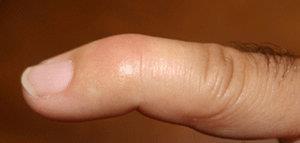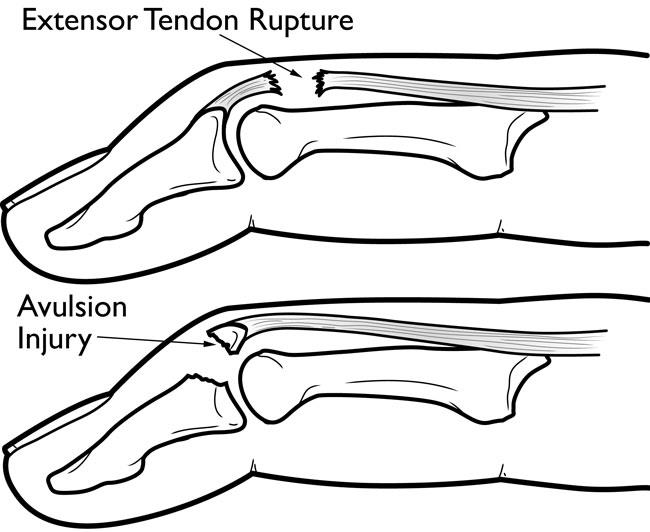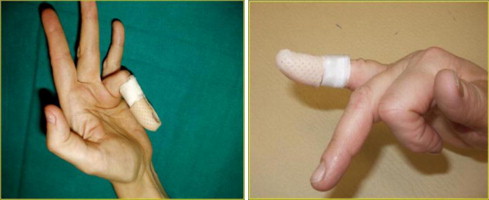nalco group
bone, muscle & joint pain physio
BOOK NOW / WHATSAPP ABOUT YOUR PAIN OR INJURY
- NOVENA 10 Sinaran Drive, Novena Medical Center #10-09, Singapore 307506
- TAMPINES 9 Tampines Grande #01-20 Singapore 528735
- SERANGOON 265 Serangoon Central Drive #04-269 Singapore 550265
Home > Blog > Team > Physiotherapy & Hand Therapy > Hand Pains & Injuries We Treat > Mallet Finger Tendon Injury Rupture Hand Therapy
Mallet Finger Tendon Injury Rupture Hand Therapy

With a mallet finger injury, the fingertip droops and cannot be actively straightened.
Mallet finger injuries refers to the full rupture to the thin extensor tendon at the end joint of a finger or thumb.
Our extensor tendons at fingers and thumb serve to extend (straighten) them, so if it's ruptured, the tip of the finger will just droop and be unable to straighten at all.
It's common name is "baseball finger" but frankly, mallet fingers can happen to anyone at all.
One of my personal stories that happened to one of my medical friend was he got his mallet finger injury...wiping the table after dinner. He accidentally bumped his finger into the wall and that was enough to snap his tendon and he got a mallet finger.
Anatomy involved in mallet injuries of the fingers and thumbs
- Tendons are tissues that connect muscles to bone.
- The muscles that
move the fingers and thumb are located in the forearm.
- Long tendons extend from these muscles through the wrist and attach to the small bones of the fingers and thumb.
- The extensor tendons on the top of the hand straighten the fingers.
- The flexor tendons on the palm side of the hand bend the fingers.
Description of a mallet tendon rupture or injury
In a mallet injury, when an object hits the tip of the finger or thumb, the force of the blow tears the extensor tendon. Occasionally, a minor force such as tucking in a bed sheet will cause a mallet finger.
Like how my GP friend got his mallet finger.
The injury may rupture the tendon or pull the tendon away from the place where it attaches to the finger bone (distal phalanx). In some cases, a small piece of bone is pulled away along with the tendon. This is called an avulsion injury.

The long, ring, and small fingers of the dominant hand are most likely to be injured.
mallet finger tendon injury Symptoms
The fingertip will droop noticeably and will straighten only if you push it up with your other hand.
The finger with mallet tendon injury usually gets / feel
- painful
- swollen and throbbing
- bruised
Some patients dont feel anything at all, and only notices the injury when they wash their face or use their hand with the mallet finger.
Risk for Infection
It is very important to seek immediate attention if there is blood beneath the nail or if the nail is detached. This may be a sign of a cut in the nail bed, or that the finger bone is broken and the wound penetrates down to the bone (open fracture).
These types of injuries put you at risk for infection.
First Aid
To relieve pain and reduce swelling, apply ice to your finger immediately and keep your hand elevated above your heart
we recommend seeing an orthopedic surgeon or hand surgeon immediately
A mallet finger injury requires medical treatment to ensure the finger regains as much function as possible.
I personally and professionally recommend seeing
- an orthopedic surgeon
- a hand surgeon
immediately. I would be happy to refer you to an orthopedic surgeon if you want a recommendation, just reach out to me through the contact information in this site.
However, there have been cases in which treatment was delayed for as long as a month after injury and full healing was still achieved.
Physical Examination
After discussing your medical history and symptoms, your doctor will examine your finger or thumb. During the examination, your doctor will hold the affected finger and ask you to straighten it on your own. This is called the mallet finger test.
X-rays
Your doctor will most likely order x-rays of the injury.
If a fragment of the distal phalanx was pulled away when the tendon ruptured, or if there is a larger fracture of the bone, it will appear in an x-ray. An x-ray will also show whether the injury pulled the bones of the joint out of alignment.
mallet finger injury hand therapy Treatments
Mallet finger injuries that are not treated typically result in
stiffness and deformity of the injured fingertip.
Good news is that the majority of mallet finger injuries can be treated without surgery.
In children, mallet finger injuries may involve the cartilage that controls bone growth. The doctor must carefully evaluate and treat this injury in children, so that the finger does not become stunted or deformed.
Nonsurgical Treatment
Most mallet finger injuries are treated with splinting. A splint holds the fingertip straight (in extension) until it heals.

To restore function to the finger, the splint must be worn full time for at least 8 weeks.
This means that it must be worn while bathing, then carefully changed after bathing. As the splint dries, you must keep your injured finger straight.
For 3 to 4 weeks after the initial splinting period, you will gradually wear the splint less frequently — perhaps only at night. Splinting treatment usually results in both acceptable function and appearance, however, many patients may not regain full fingertip extension.
If the fingertip droops at all, healing is
disrupted and you will need to wear the splint for a longer period of
time (another 4-8 weeks and checked regularly at the end of the 4th week; if it still droops, extend for another 4 weeks)
Because wearing a splint for a long period of time can irritate the
skin, our principal hand therapists will advise and talk with you about how to carefully check your
skin for problems. We will be schedling visits with our hand therapist over the 8-16 weeks to monitor your mallet tendon injury healing progress.
For some patients, the splinting regimen is very difficult. In these cases, the doctor may decide to insert a temporary pin across the fingertip joint to hold it straight for 8 weeks.
Surgical Treatment
Your doctor may consider surgical repair if there is a large fracture fragment or the joint is out of line (subluxed). In these cases, surgery is done to repair the fracture using pins to hold the pieces of bone together while the injury heals.
It is not common to treat a mallet finger surgically if bone fragments or fractures are not present. Surgical treatment of the damaged tendon usually requires a tendon graft — tendon tissue that is taken (harvested) from another part of your body — or even fusing the joint straight.
An orthopedic surgeon should be consulted in making the decision to treat this condition surgically.
